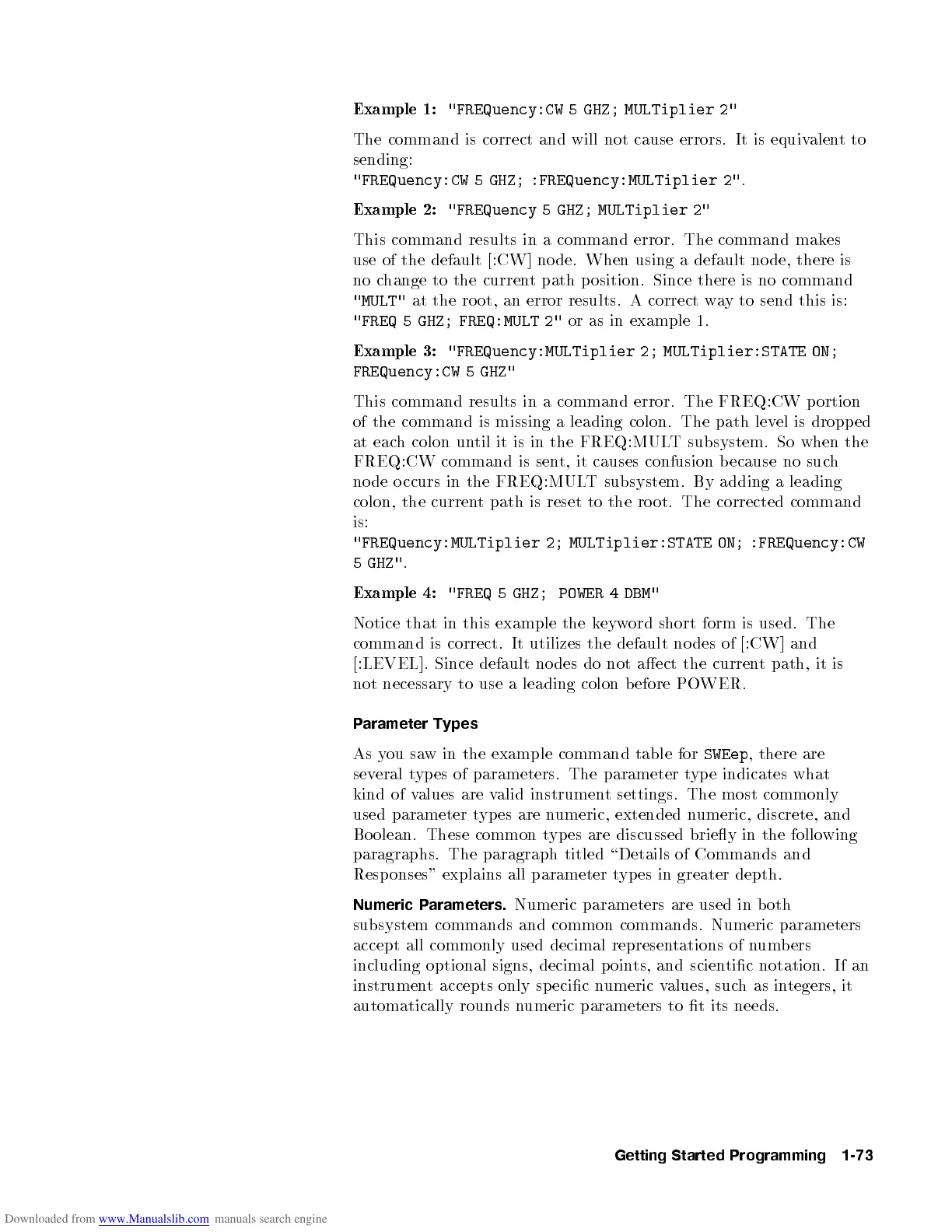Example 1:
"FREQuency:CW 5 GHZ; MULTiplier 2"
The command is correct and will not cause errors. It is equivalentto
sending:
"FREQuency:CW 5 GHZ; :FREQuency:MULTiplier 2"
.
Example 2:
"FREQuency 5 GHZ; MULTiplier 2"
This command results in a command error. The command makes
use of the default [:CW] no de. When using a default no de, there is
no change to the current path p osition. Since there is no command
"MULT"
at the ro ot, an error results. A correct way to send this is:
"FREQ 5 GHZ; FREQ:MULT 2"
or as in example 1.
Example 3:
"FREQuency:MULTiplier 2; MULTiplier:STATE ON;
FREQuency:CW 5 GHZ"
This command results in a command error. The FREQ:CW p ortion
of the command is missing a leading colon. The path level is dropp ed
at each colon until it is in the FREQ:MULT subsystem. So when the
FREQ:CW command is sent, it causes confusion b ecause no such
node o ccurs in the FREQ:MULT subsystem. By adding a leading
colon, the current path is reset to the ro ot. The corrected command
is:
"FREQuency:MULTiplier 2; MULTiplier:STATE ON; :FREQuency:CW
5 GHZ"
.
Example 4:
"FREQ 5 GHZ; POWER 4 DBM"
Notice that in this example the keyword short form is used. The
command is correct. It utilizes the default no des of [:CW] and
[:LEVEL]. Since default no des do not aect the curren
t path, it is
not necessary to use a leading colon b efore PO
WER.
Parameter Types
As you saw in the example command table for
SWEep
, there are
several types of parameters. The parameter type indicates what
kind of values are valid instrument settings. The most commonly
used parameter types are numeric, extended numeric, discrete, and
Bo olean. These common types are discussed briey in the following
paragraphs. The paragraph titled \Details of Commands and
Resp onses" explains all parameter types in greater depth.
Numeric Parameters.
Numeric parameters are used in b oth
subsystem commands and common commands. Numeric parameters
accept all commonly used decimal representations of numbers
including optional signs, decimal p oints, and scientic notation. If an
instrument accepts only specic numeric values, suchasintegers, it
automatically rounds numeric parameters to t its needs.
Getting Started Programming 1-73
